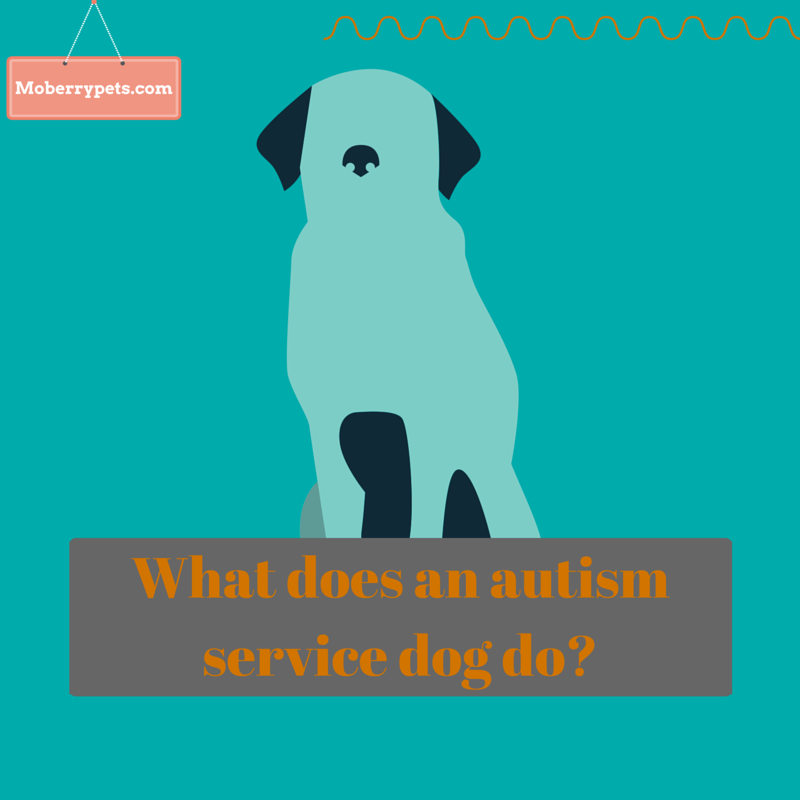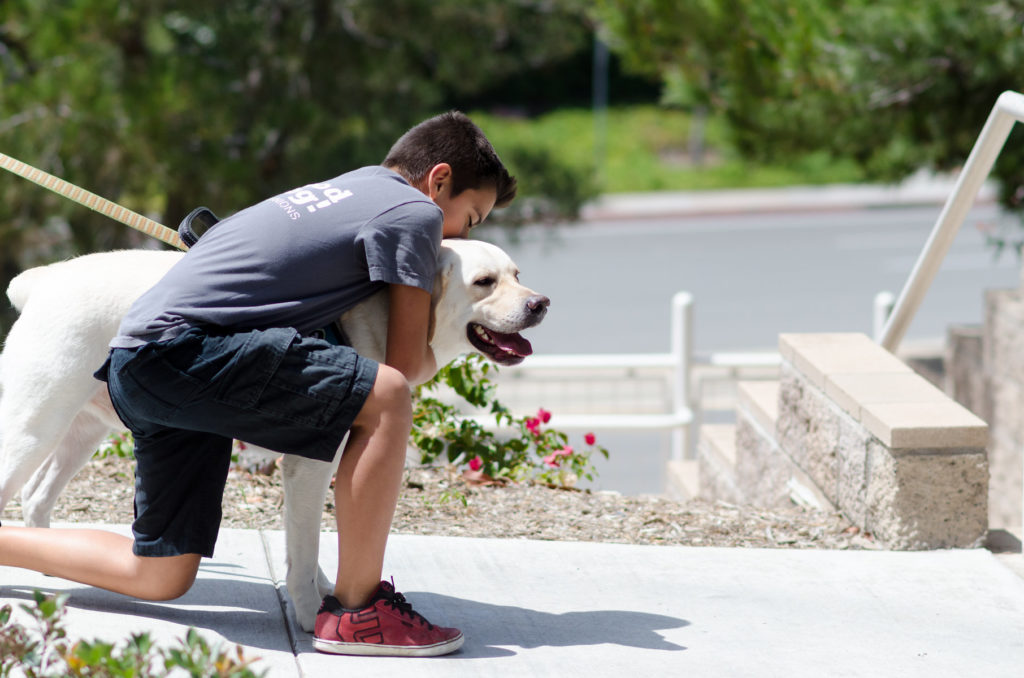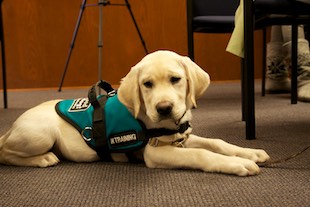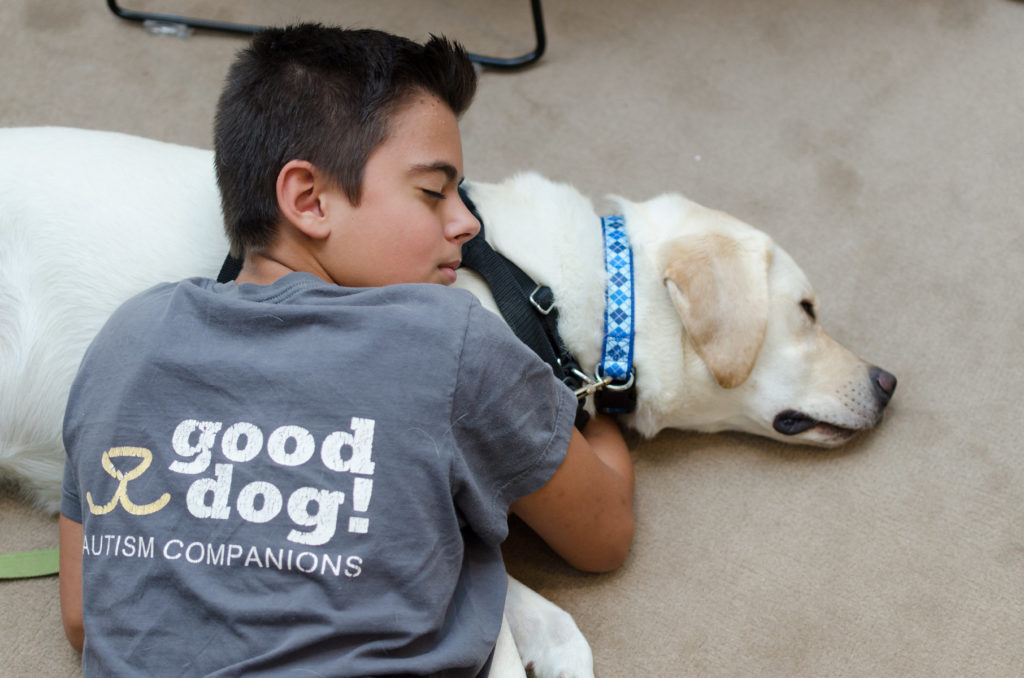Service dogs are trained to perform specific tasks which help their owner manage their day to day lives, or help with deal with specific health issues. Service dogs can help visually impaired people navigate streets, alert hearing impaired people to dangers they may not be aware of, encourage people living with mental ill health to take their medication etc. But what does an autism service dog do exactly? To find out let’s take a closer look at the roles and responsibilities of these awesome dogs.
There are a huge range of tasks that a dog can be trained to do to assist its owner to live independently and manage their condition.
To answer the question ‘what does an autism service dog do?’, a service dog is specifically trained to help someone diagnosed as autistic and will need to do a variety of general tasks, common of all autism service dogs. But the dog will also be trained for their owner’s specific needs, no autism service dog will provide exactly the same service as another service dog.
This specific training is valuable to the owner, but it does mean training can be lengthy and the owner may need to wait some time before the dog lives with them. When the dog does come into the home however, its effect can be transformative and these service dogs can make a huge difference to the owner.
Organizations like Custom Canine Service Academy train dogs for a multitude of different responsibilities one of which is autism.
Reacts to External Stimuli
Autism is a sensory processing disorder like visual impairment or hearing impairment and so they are trained to do many of the tasks we are used to seeing. For example seeing dogs pass on safety information to their owner when they are at the edge of the sidewalk and about to cross a road.
As someone with autism will find it difficult to process information and, in particular, they find it difficult to prioritize and react to external stimuli such as safety concerns.
An autism service dog will pass on the information which needs prioritizing. For example, someone with autism will have a myriad of things assaulting their senses and they may find it difficult to process the sound of a fire alarm and give it priority over the sound of birds singing.
What does an autism service dog do to react to external stimuli?
-
Alerts its owner of safety concerns such as a smoke alarm or fire alarm, or the smell of burning food on the stove etc.
-
Alert someone else (it can be trained to do so) when their owner becomes overstimulated.
-
Lead their owner away from the situation.
-
Enables a speedy decision to be made in situations where the owner may find it difficult to process information well.
Notify Owners of Repetitive Behaviors
Some people with autism resort to repetitive behaviors to manage their confusion. These repetitive behaviors are called stimming and some can be calming, such as the flapping of hands, but others can be dangerous, such as banging their head against a wall.
An autism service dog can be trained to act in situations where the owner is stimming to alert them to this fact. It is then up to the owner to decide whether to stop this behavior or not. If the stimming behavior is harmful, just notifying the owner of this could help them manage their behavior.
What does an autism service dog do to notify owners of repetitive behaviors?
Alerts its owner they are engaging in repetitive behavior.
If the behavior continues, the dog has no power to stop it, but can be trained to notify a caregiver of a safety concern if the behavior doesn’t stop.
Calms its Owner if Distressed
People with autism may become overstimulated and be unable to process this information, causing them distress. In certain circumstances pressure on the person’s body can have a calming effect. Often tightly wrapping themselves up in blankets can help provide this pressure and have the necessary calming effect.
A service dog can also be trained to apply pressure, though the dog would naturally be in tune with its owner’s distress and seek to comfort them with his body weight without any training.
What does an autism service dog do to calm the owner if distressed?
The service dog can be trained to identify distress in its owner and comfort them with his body weight.
The dog’s body weight applies the pressure that the owner will find calming and helps them overcome an episode of overstimulation.
Helps Autistic Children Overcome Communication Difficulties
For some people with autism it can be difficult to communicate with others. Autistic children especially may struggle with this as they may have delayed speech development or may repeat words and phrases rather than form full sentences.
A service dog can enable an autistic child to communicate better through interaction with the dog and the child learns how to interact better socially.
The dog is able to provide positive reinforcement to the child through nudging, cuddling and generally calming them to channel aggression and tantrums that are a feature of their frustration with their surroundings and inability to communicate well.
What does an autism service dog do to encourage autistic children to overcome communication difficulties?
The service dog can be trained to calm the child down when they become aggressive or have tantrums because of their limited communication skills.
The dog helps alleviate the communication problems by providing comfort in stressful situations and improving their ability to interact.
What does an autism service dog do?
The simple answer to the question ‘what does an autism service dog do?’ is that it does whatever it needs to do to help its owner manage their disability.
A service dog can be trained to identify safety concerns and help their owner become aware of them. These safety concerns could be due to external stimuli such as a smoke alarm sounding, or their own harmful behavior.
Dogs can be trained to alert another person if their owner becomes unsafe, they can also be trained to calm their owner, or even help them manage the symptoms of autism and learn to interact better with other people.
When the owner needs calming the mere presence of the dog can be just as effective as any training in keeping their owner calm and provide them with comfort.







